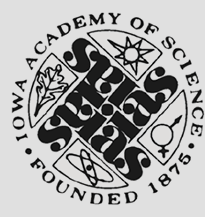Home > Iowa Academy of Science > Journals & Newsletters > Iowa Science Teachers Journal > Volume 36 > Number 2 (2009)
Document Type
Article
Abstract
Thermal energy, internal energy, temperature, and heat are words that carry very specific meanings. However, common usage and the lack of consistent usage from texts and teachers can interfere with students' abilities to develop a strong conceptual foundation of thermal energy (Westphal, 2003). Stiles (2006) suggests that using experiences to investigate relationships is an integral part of moving students from simple knowledge to deep understanding. Understanding, higher-order thinking skills, the ability to work and think collaboratively, effective communication skills, and the ability to make informed decisions are all important goals teachers should support through their instruction. Smith (1996), Freedman (1997), and Mao and Chang (1998) suggest that using inquiry methods result in significantly improved mastery of science content, content retention, enhanced critical thinking skills, laboratory skills, and attitudes when compared with traditional teaching methods. Yet, we as teachers have important roles to play in making inquiry based instruction work. This article articulates how inquiry oriented instruction can consistently promote the goals stated above while developing an understanding of thermal energy through basic science concepts. This article promotes National Science Education Standards A and B, and Iowa Teaching Standards 1, 2, 3, and 5.
Publication Date
Spring 2009
Journal Title
Iowa Science Teachers Journal
Volume
36
Issue
2
First Page
25
Last Page
30
Copyright
© Copyright 2009 by the Iowa Academy of Science
Language
en
File Format
application/pdf
Recommended Citation
McLaughlin, Shannon and Bajpai, Mahima
(2009)
"Heating Up the Classroom: Exploring Relationships between Temperature and Thermal Energy,"
Iowa Science Teachers Journal: Vol. 36:
No.
2, Article 7.
Available at:
https://scholarworks.uni.edu/istj/vol36/iss2/7

